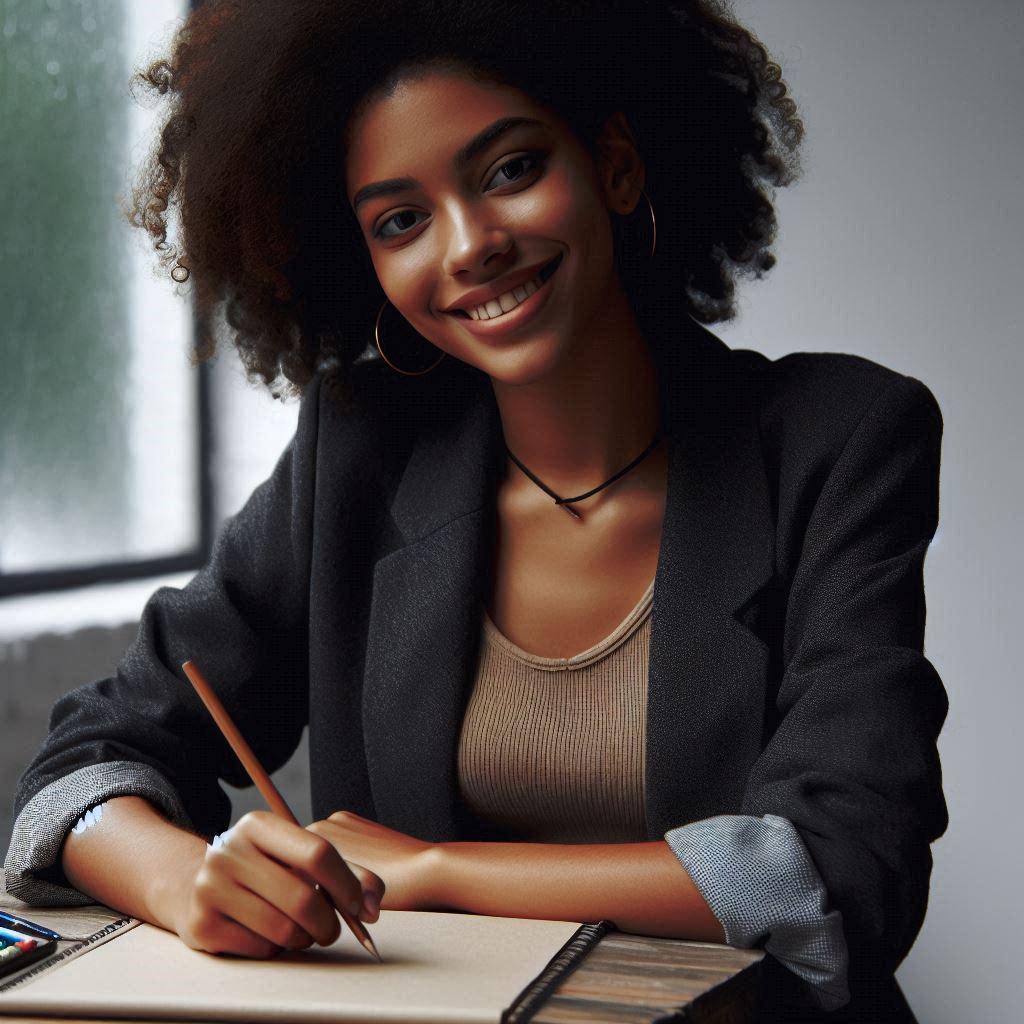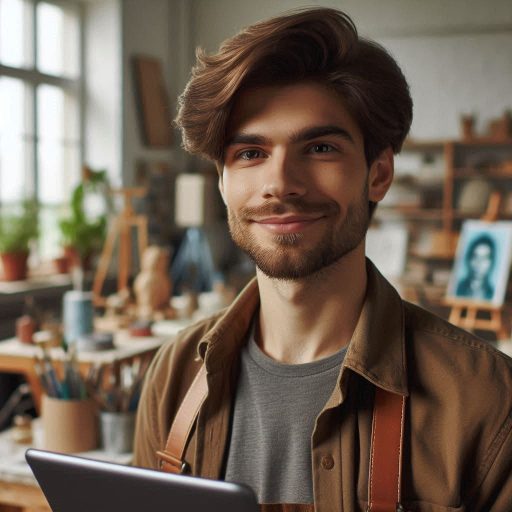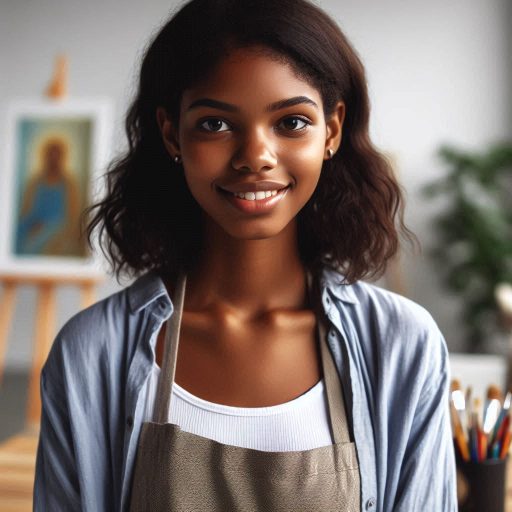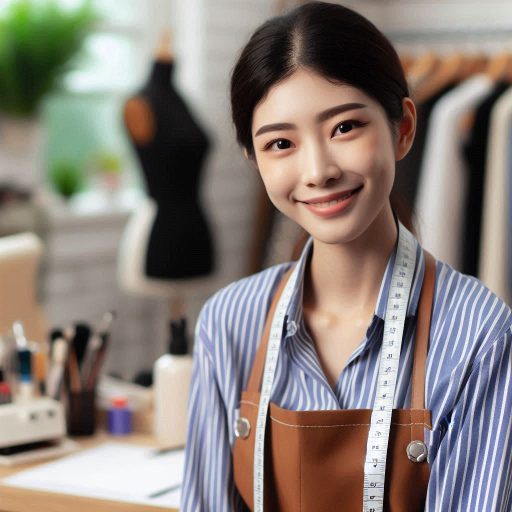Introduction
Art education plays a crucial role in developing creativity and critical thinking in students.
Schools emphasize art to foster self-expression and cultural appreciation.
It helps students explore various mediums and techniques, enhancing their visual and tactile skills.
Social media has become a powerful tool in education, revolutionizing how students and teachers interact.
Platforms like Instagram, Pinterest, and Twitter offer a wealth of resources and inspiration.
Teachers and students use social media to share artwork, participate in challenges, and connect with a global community.
This blog post aims to explore how social media can enhance art education.
It will discuss the benefits of integrating social media into art curricula and provide practical strategies for leveraging these platforms.
By harnessing social media, educators can enrich students‘ learning experiences and broaden their artistic horizons.
Benefits of using social media in art education
Enhances student engagement and participation
Using social media in art education can have a multitude of benefits for both students and teachers.
One of the main advantages is that it enhances student engagement and participation in the learning process.
By incorporating social media platforms into the curriculum, educators can create a more interactive and dynamic learning environment that encourages students to actively participate in discussions, projects, and critiques.
Provides a platform for creative expression
Additionally, social media provides a platform for creative expression where students can showcase their artwork, receive feedback from their peers and teachers, and gain recognition for their talents.
This type of exposure can boost students’ confidence and motivation to continue pursuing their artistic endeavors.
Allows for collaboration and sharing of ideas
Furthermore, social media allows for collaboration and sharing of ideas among students, teachers, and other artists from around the world.
Through platforms like Instagram, Pinterest, and Twitter, students can connect with others who share their passion for art, exchange thoughts and inspirations, and even work on collaborative projects together.
This not only expands students’ creative horizons but also helps them develop important communication and teamwork skills.
In fact, the use of social media in art education offers a myriad of benefits that can enhance the overall learning experience for students.
From increasing student engagement and participation to providing a platform for creative expression and fostering collaboration, social media has the potential to revolutionize the way art is taught and learned in the digital age.
Read: How to Motivate Students in Art and Design Classes
Transform Your Career Today
Unlock a personalized career strategy that drives real results. Get tailored advice and a roadmap designed just for you.
Start NowWays to Integrate Social Media into Art Curriculum
Social media offers exciting ways to enhance art education.
By creatively incorporating these platforms, educators can elevate student engagement and showcase their talents.
Here are three effective methods:
Create Art Challenges or Projects
Art challenges and projects on social media engage students and spark their creativity.
Design monthly art challenges, encouraging students to create and share their work online.
Platforms like Instagram and TikTok are perfect for these activities.
Students can use specific hashtags to participate and view each other’s work.
This approach fosters a sense of community and motivates students to experiment with different techniques.
Regular challenges help students build a portfolio and receive feedback from peers and a broader audience.
Share Student Work on Social Media
Sharing student artwork on social media is a powerful way to showcase their talent.
Create dedicated accounts or pages for the class or school to highlight student projects.
Posting high-quality images of their work can boost students‘ confidence and provide them with recognition.
Ensure students have consent to share their work online.
Tag students and use appropriate hashtags to increase visibility.
This practice not only celebrates their achievements but also connects them with a larger art community, inspiring further growth and interest.
Use Social Media for Virtual Exhibitions or Art Competitions
Social media is ideal for hosting virtual exhibitions and art competitions.
Platforms like Facebook and Instagram allow you to create events where students can showcase their work.
Organize virtual gallery tours, where students can present their art to an online audience.
Host competitions with categories relevant to your curriculum, and encourage students to participate.
Showcase Your Business Today
Reach thousands of readers actively exploring professional services. Publish your business profile and grow your audience now.
Publish NowOffer digital badges or certificates to winners to acknowledge their accomplishments.
Virtual exhibitions and competitions make art education accessible to a wider audience and foster a competitive yet supportive environment.
By leveraging social media, educators can make art education more dynamic and inclusive, helping students connect with the wider art world.
Read: How to Handle Creative Blocks in Design
Tips for Effectively Using Social Media in Art Education
Set Guidelines for Appropriate Use of Social Media in the Classroom
Establish clear rules for social media use to ensure a safe learning environment.
Define which platforms are acceptable for class activities.
Specify how students should interact with content.
Outline appropriate behaviors, including respectful communication and privacy.
Regularly review these guidelines to adapt to new social media trends.
Ensure all students understand these rules and the reasons behind them.
Teach Students About Online Safety and Digital Citizenship
Instruct students on online safety to protect their personal information.
Discuss the importance of strong, unique passwords and privacy settings.
Educate them on recognizing and avoiding cyberbullying and inappropriate content.
Emphasize the significance of respecting others’ intellectual property and avoiding plagiarism.
Promote positive digital citizenship by encouraging students to engage responsibly and ethically online.
Regular discussions and updates on online safety can reinforce these concepts.
Encourage Students to Interact with Art-Related Content on Social Media
Motivate students to follow and engage with art communities on social media.
Encourage them to share their own artwork and provide constructive feedback to peers.
Highlight how social media can be a platform for inspiration and learning.
Showcase successful artists and art institutions that use social media effectively.
Foster an environment where students can discuss and critique art positively and respectfully.
This interaction can enhance their learning experience and connect them with the broader art world.
By implementing these tips, educators can effectively leverage social media to enrich art education.
Clear guidelines, a focus on online safety, and active engagement with art-related content help create a positive and educational online presence for students.
Read: Collaborating with Other Art Educators

Examples of Successful Social Media Campaigns in Art Education
In the realm of art education, social media has proven to be an invaluable tool for showcasing student work, connecting with the community, and expanding learning beyond the confines of the classroom.
Let’s delve into some examples of successful social media campaigns in the field of art education.
Highlighting Specific Schools or Teachers
One prominent example of a school using social media effectively in art education is XYZ High School.
The art department at XYZ High School regularly posts about student projects, upcoming events, and educational resources on their Instagram account.
By doing so, they have managed to engage students, parents, and the broader community in a meaningful way.
Moreover, art teachers like Ms. Smith at ABC Middle School have leveraged platforms like Twitter to share their innovative teaching methods and classroom activities.
By documenting her students’ creative process and showcasing their final artworks, Ms. Smith has garnered a significant following online.
This not only boosts her professional profile but also inspires other educators to incorporate social media into their teaching practices.
Showcasing Student Projects
Social media platforms such as Facebook, Instagram, and TikTok have become powerful tools for students to gain recognition for their artistic endeavors.
For instance, a group of high school students from DEF Art Academy created a mural that went viral on Instagram, garnering thousands of likes and shares.
This exposure not only boosted the students’ confidence but also attracted the attention of art enthusiasts and potential collaborators.
Additionally, platforms like Pinterest and Behance provide students with a global stage to exhibit their work and receive feedback from a diverse audience.
By sharing their projects online, students can connect with like-minded individuals, receive constructive criticism, and even secure opportunities for exhibitions or collaborations.
This hands-on experience in promoting their work on social media equips students with valuable skills for a future career in the arts.
Impact of Social Media on Expanding Art Education
The influence of social media on art education extends far beyond the confines of the school walls.
Showcase Your Business Today
Reach thousands of readers actively exploring professional services. Publish your business profile and grow your audience now.
Publish NowBy showcasing student projects and engaging with a wider audience online, educators can promote creativity, cultural awareness, and self-expression on a global scale.
Social media platforms facilitate connections with artists, art organizations, and creative industries, opening up new avenues for collaboration and professional development.
Furthermore, the accessibility of social media allows students to explore diverse art forms, styles, and cultural perspectives that may not be covered in traditional art curriculum.
By following art accounts, participating in online challenges, and engaging in digital art communities, students can broaden their artistic horizons and develop a deeper appreciation for the arts.
This exposure to a wide range of artistic expressions nurtures creativity, critical thinking, and cultural literacy among students.
In a nutshell, social media has revolutionized the way art education is delivered, experienced, and shared.
By highlighting successful campaigns in art education, showcasing student projects, and discussing the impact of social media on expanding learning opportunities, educators can harness the power of digital platforms to inspire creativity, foster collaboration, and elevate the role of art in society.
Let’s continue to explore the endless possibilities that social media offers in enriching art education for future generations.
Read: Marketing Yourself as a Costume Designer
Challenges and Limitations of Using Social Media in Art Education
Social media can significantly enhance art education but also presents notable challenges.
Addressing these concerns is crucial for effective implementation.
Address Concerns About Distractions and Misuse of Social Media
Social media platforms can be highly distracting.
Students may find themselves spending more time on unrelated content than on educational material.
To combat this, educators must set clear guidelines on social media use within educational contexts.
Monitoring tools can help track students’ engagement and ensure that their time on these platforms is productive.
Encouraging a focus on art-related content and providing structured assignments can also mitigate these distractions.
Issues Related to Privacy and Online Content Ownership
Privacy is a major concern with social media.
Students may unintentionally share personal information or artwork that they do not wish to be publicly accessible.
Educators should educate students on privacy settings and the implications of sharing content online.
Establishing protocols for content ownership is also essential.
This includes informing students about their rights regarding the artwork they post and ensuring they understand how their work can be used or shared by others.
Consider Accessibility and Equity Issues for Students Without Internet Access
Not all students have equal access to the internet or social media.
This digital divide can create disparities in learning opportunities.
Educators must recognize this and provide alternative resources for those without internet access.
For instance, offering offline assignments or utilizing local community resources can help bridge this gap.
Additionally, schools should advocate for improved internet access and digital equity to ensure that all students can benefit from the opportunities provided by social media in art education.
Addressing these challenges thoughtfully ensures that social media can be a powerful tool in art education while minimizing potential drawbacks.
Strategies for Overcoming Challenges and Maximizing the Benefits of Social Media
Social media offers rich opportunities for art education, but it comes with challenges.
To overcome these challenges and maximize benefits, implement these strategies.
Provide Training and Support for Teachers to Integrate Social Media into Their Lessons
Effective use of social media in art education begins with teacher readiness.
Provide training workshops focused on integrating social media into lessons.
Offer resources on creating engaging content and using various platforms.
Encourage teachers to share best practices and successes.
Regularly update training to keep pace with new social media tools and trends.
By empowering teachers with knowledge, you ensure they can use social media effectively and confidently.
Establish Clear Communication Channels with Students and Parents Regarding Social Media Use
Clear communication is key to successful social media integration
Develop a policy that outlines appropriate use of social media in art education.
Share this policy with students and parents, emphasizing privacy, safety, and the educational benefits.
Regularly update parents and students about social media activities and objectives.
Provide guidelines on how they can engage positively with the content.
Showcase Your Business Today
Reach thousands of readers actively exploring professional services. Publish your business profile and grow your audience now.
Publish NowOpen lines of communication to address concerns and feedback promptly.
Collaborate with Other Educators or Artists to Create Engaging Social Media Content
Collaboration enhances the quality and reach of social media content.
Partner with other educators or artists to develop creative projects.
Jointly create content that showcases diverse art forms and perspectives.
Use collaborations to bring fresh ideas and expertise into your social media strategy.
Promote these collaborations to broaden your audience and increase engagement.
This approach not only enriches the content but also builds a supportive community of educators and artists.
Implementing these strategies will help overcome challenges and maximize the benefits of social media in art education.
By training teachers, communicating clearly, and collaborating with others, you enhance the learning experience and create a vibrant, engaging art education environment.
Delve into the Subject: Exhibition Design for Museums vs. Trade Shows
Conclusion
Social media offers endless possibilities to enhance art education in innovative ways.
By utilizing platforms such as Instagram, Pinterest, and YouTube, educators can create engaging and interactive learning experiences for students.
Social media provides a medium for students to showcase their artwork, gain inspiration from other artists, and participate in online art communities.
It also allows for collaboration, feedback, and networking opportunities that bridge the gap between the classroom and the art world.
Educators should embrace social media as a valuable tool to supplement traditional teaching methods and connect with students in a digital age.
By incorporating social media into their teaching practices, educators can foster creativity, critical thinking, and digital literacy skills in their students.
The potential of social media to enhance art education is vast, and educators are encouraged to explore creative ways to integrate these platforms into their curriculum.
By leveraging the power of social media, educators can cultivate a new generation of artists who are equipped with the skills and knowledge to thrive in a rapidly evolving digital landscape.
[E-Books for Sale]
The Big Book of 500 High-Paying Jobs in America: Unlock Your Earning Potential
$19.99 • 500 High-Paying Jobs • 330 pages
Explore 500 high-paying jobs in America and learn how to boost your career, earn more, and achieve success!
See All 500 High-Paying Jobs of this E-Book
1001 Professions Without a Degree: High-Paying American Jobs You Can Start Now
$19.99 • 1001 Professions Without a Degree • 174 pages
Discover 1001 high-paying jobs without a degree! Unlock career tips, skills, and success strategies for just $19.99!




